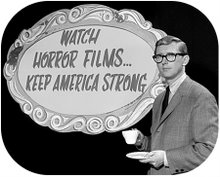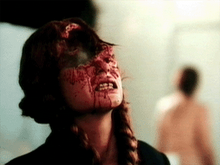
Alan Parker is one of those directors critics love to hate. He has a high opinion of his work and himself, but his films too often self-consciously masquerade as high art or hot-button issue movies, barely covering the ordinariness of the mildly fascistic middlebrow vulgarian more in line with Oliver Stone or Adrian Lyne than one of the greats. He's a bit of a dilettante as well, hitting different genres and countries without much personal connection to the material, though I'm certainly making an assumption I can't entirely prove. What I do clearly see in his films is much ugly stereotyping (every white male Southerner is a sweaty, racist, stupid, fat or emaciated hillbilly), use of women as sex objects or plot exposition (sometimes both), and a macho, right-wing interior covered by a thin liberal exterior. These qualities are shared by his one-time collaborator Oliver Stone (Stone wrote the screenplay for Parker's Midnight Express), but Parker is less ham-fisted and messianic than Stone.

I'll give Parker some credit. He's good with his lead actors, he picks talented cinematographers, and he can be pretty entertaining. His varied filmography appealed to precocious teenage boys and/or girls in the 1970s, 1980s, and 1990s. In that way, he can be seen as a gateway drug to better things, much like Jim Morrison, the Beat Generation, and mainstream alternative rock. Just look at this lineup: Bugsy Malone (1976), Midnight Express (1978), Fame (1980), Pink Floyd The Wall (1982), Birdy (1984), Mississippi Burning (1988), The Commitments (1991), and Evita (1996).

Angel Heart is my favorite Parker film, a period detective noir/horror hybrid that mostly succeeds despite Parker's flaws because of its intriguing premise, reliable genre thrills, offbeat cast, luscious cinematography, and visually stimulating locations. It's also my favorite Parker film for personal teenage reasons involving Lisa Bonet. I taped this movie off of cable television in my formative early adolescent years, and let's just say that some scenes on the video got more play than others. I hadn't seen this film in at least 12 or 13 years, but I knew every move Bonet was going to make. "She's going to bite her thumbnail here," I thought, and she did. It's some kind of voodoo post-pubescent muscle memory sexual attraction movie magic. Man, I can't believe I forgot how hot a 19-year-old Lisa Bonet was in this movie. Okay, I'll wipe my dirty old man drool off the computer and continue. Yeah, it was just two paragraphs ago that I criticized Parker for treating women like sex objects. Life is complicated.

Anyway, I like Angel Heart more than any other Parker film for many reasons, teenage lust being just one. I love the film's 1950s period recreations, exaggerated just enough without moving into self-parody. The location shooting in two of the most cinematically appealing cities on earth, New York City and New Orleans, doesn't hurt. The movie successfully blends two of my favorite genres, horror (freaking obviously) and film noir. I like the bananas cast. Mickey Rourke is the right guy to play a sleazy, charismatic private eye from Brooklyn, and Robert De Niro is just campy and amusing enough as the devil. (I'm not spoiling the end when I say that. His name is Louis Cyphre, after all, and he talks about eggs being a religious symbol for the soul as he devours a hard-boiled one.) I've already mentioned the Lisa Bonet factor, but I want to put in some positive words for her as an actress, too. I've heard people call her a bad actor, but I really disagree with that assessment. I like her understated, naturalistic style. There are also some fine smaller roles here for Charlotte Rampling as a fortune teller and legendary blues musician Brownie McGhee as a legendary blues musician. Who could see that coming? You will also see one of the worst acting performances ever committed to celluloid, from Elizabeth Whitcraft, which is thankfully brief.

The story begins with New York private eye Harry Angel (Mickey Rourke) called to the offices of Cyphre (Robert De Niro). A big band crooner by the name of Johnny Favorite owes Cyphre a debt, but Favorite is missing. Cyphre wants Angel to track him down. This seemingly straightforward job turns into a whirlwind, nightmarish journey through Harlem, Coney Island, New Orleans, the bayou country outside of the city, jazz, blues, voodoo, and Satanism, with plenty of murder, fistfights, dog bites, gumbo, partial nudity, blood, sex, chicken phobias, my favorite LaVern Baker song ("Soul on Fire"), and fat, racist Southern cops. The movie gets more ridiculous as it progresses, a visual motif involving a large fan is overused, and the twist ending is sub-Shyamalan, but it's all presented with such energy, fun, and sleaze that I didn't mind too much.
Angel Heart is not the masterpiece I believed it was when I was 14, but it's far less ponderous and more fun than Parker's other films. It has the good sense to locate the action in two of the four best noir locations, New York and New Orleans (the other two are Los Angeles and rural Texas, if you're keeping score), and the Satan and voodoo elements aren't overcooked until the movie's final moments. In the end, this is a fun 1980s genre hybrid that gives you the chance to see De Niro and Rourke act together and ogle Lisa Bonet. In these troubling times, that's saying a lot.










